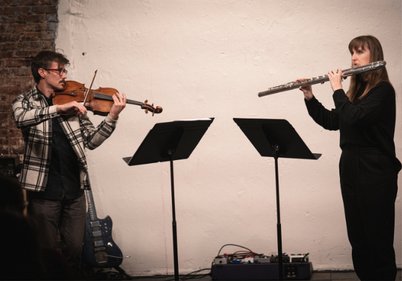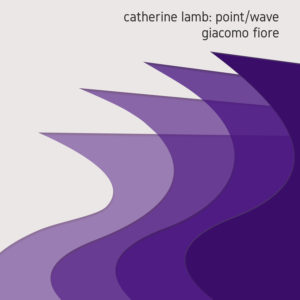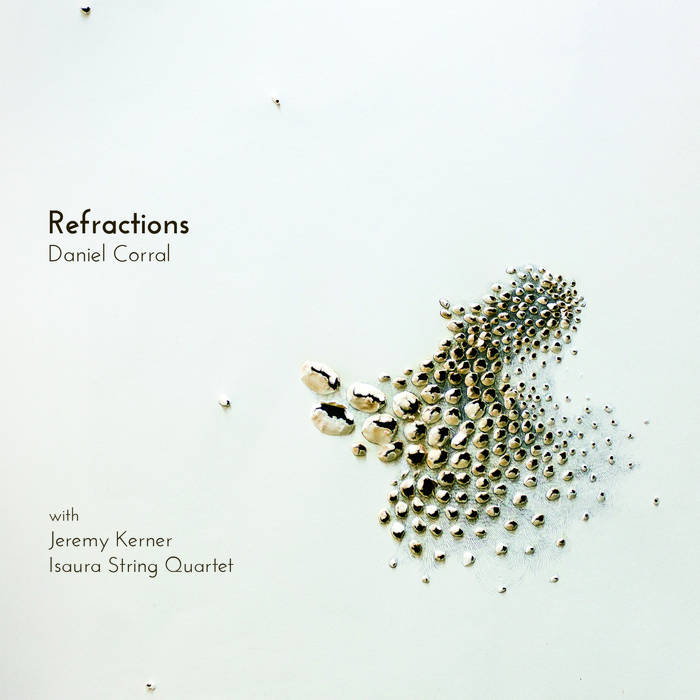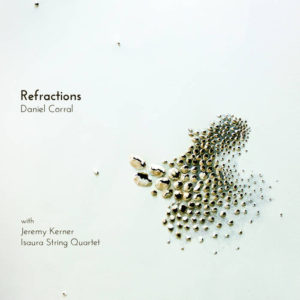
On Tuesday, November 22, 2022, Brightwork newmusic’s Tuesday@Monk Space was host to the populist records recording label and several of their artists in a concert titled Ten Years of populist records. Andrew McIntosh, Rachel Beetz, Nicholas Deyoe and Aperture Duo all performed in a selection of music heard on CDs released over the ten year history of populist records. It was good to see a big crowd at Monk Space with everyone getting reacquainted after the scarcity of live performances during the pandemic.
Eggs and Baskets (1987), by Tom Johnson was the first piece on the concert program and was performed by Rachel Beetz, flute and Andrew McIntosh, violin. This is one of Johnson’s more distinctive forms, musical works driven by mathematics. The narration by Adrianne Pope explained that the notes of the flute and the violin illustrated how a number of eggs could be distributed among two baskets in all possible combinations. With two eggs – one in each basket – the flute, then the violin – each sounded a short note. Then the two eggs were placed, in turn, into each of the baskets and so the flute sounded two notes, followed by the violin. As the number of eggs increased, the placing of the eggs in the two baskets in all possible combinations grew more complex, with more pitches and notes coming from each instrument. In this way, a straightforward mathematical concept was spun into the structure of a whimsical musical piece reminiscent of Johnson’s earlier work, narayana’s cows.
As the number of eggs grew to five, 32 separate notes were required to account for all the possibilities of eggs in the two baskets. The notes now began to be perceived as a series of musical phrases and not simply as markers for the eggs; Beetz and McIntosh traded their notes with great precision and a fine sense of timing. At the finish, all of the combinations, from six eggs down to two, were played without pausing, and the stream of notes at various pitches now resembled music more than mathematics. All this all proved to be highly entertaining – Eggs and Baskets exemplifies how extraordinary music can be crafted from ordinary arithmetic.
Cat Lamb’s frame/frames (2009) followed, and this began with a sustained tone from an open violin string played by McIntosh. This pitch remained steady and constant throughout the piece while Rachel Beetz accompanied on a bass flute. The tone from the flute began at the same pitch as the violin, but was then bent slightly through a series of extended techniques. Ms. Beetz used alternate fingering as well as over-blowing and under-blowing to vary the pitch, sometimes only by a few cents and at other times by quarter or even half-tones. This produced a variety of intriguing blends and interactions as the flute note weaved in and around the steady pitch of the violin. All of the variations were sounded by the flute, and this was the more difficult instrument of the two to do so – but the playing was accomplished with great skill by Ms. Beetz. There is a haunting and introspective feel to this piece and it requires the listener to focus on the subtle changes. fame/frames provides a valuable illustration of the intimate relationships that are possible between similar pitches beyond those heard in conventional harmony.
My memories are never an accurate representation (2008), by Andrew Tholl was next, a solo piece performed by Andrew McIntosh on violin. Although very short, it was packed with every sort of advanced playing technique thought possible – and some that were not. There were squeaks, rapid runs of notes, fast phrases and great jumps in pitch. There was nothing like a melody or structure to this, just a series of highly expressive gestures and sounds. Andrew McIntosh played all this with accuracy and poise in a show of great virtuosity.
Stillness Is the Move (2022), by Rachel Beetz was next, performed by the composer. Ms. Beetz played the flute that was wired for computer audio processing, a foot pedal for looping and a position sensor worn on her head like a boom mike. As the position of her head moved up and down, the processed pitch of the flute notes also changed up or down. As the piece proceeded, bursts of flute notes were heard, like flowers sprayed into the sunshine. The sound was both airy and beautiful, producing a feeling of warm optimism. Ms. Beetz then lowered her head and the pitches of the flute were processed downward, creating an active rumbling which was looped and sustained. More higher pitches followed and these provided a vivid contrast. As the pitches changed and more sustain was activated, interesting harmonies often broke out, adding to a dreamlike quality overall. For all their complexity, the electronic elements performed flawlessly during the performance and the close acoustic of Monk Space revealed every detail in the resulting sound. The computer processing, sound amplification and flute tones worked well together and the result was very polished. Stillness Is the Move made a great first impression and this electronic configuration, combined with inspired flute playing, shows great promise.
Transgressions (2019), by Andrew McIntosh followed, performed by Aperture Duo with Adrianne Pope, violin and Linnea Powell, viola. This began with a sustained pitch in the viola, answered by the violin. Electronic sounds entered in a sort of counterpoint and this led into a nice interaction between the various tones. Some solitary pizzicato followed and the dry drawing of a bow across the strings, without intonation, added to a sense of mystery. Various extended techniques were heard with short bursts of tones, inviting the listener to appreciate the many subtle interactions and interesting harmonies. The playing by Aperture Duo was skillful and exact with Transgressions extending the vocabulary of their string duo in new and unusual directions.
The final piece of the concert was Nebula/Mattie (2022) by Nicholas Deyoe, who performed this on an electric guitar connected to a formidable array of processing modules, foot pedals and amplifiers. Each strum of the guitar brought forth a great wave of processed sound that was full of power and harmony. Even very light touches on the guitar strings translated into big sounds, and the reflections off the brick walls of Monk Space provided additional amplification. Deyoe went from strumming the guitar to bowing the strings and this seemed to increase the power by adding a stronger sense of continuity to the processed tones. At times it felt like standing in front of a thundering waterfall with the sound physically beating through your body.
Towards the finish, the bow was discarded and a guitar pick was employed. The notes were now heard singly and then processed into a shower of sounds like roman candles bursting in the air on the Fourth of July. This was not as relentless as the bowed sounds and made for a nice contrast in texture. Nebula/Mattie was an impressive solo performance demonstrating just how much sonic power can be deployed by a musician with no fear.
Ten Years of populist records was a reminder of how favored we are in Los Angeles to have several small record labels dedicated to the recording of local new music. The merchandise table offered a large number of populist CDs, a visible sign of their success and our good fortune.


